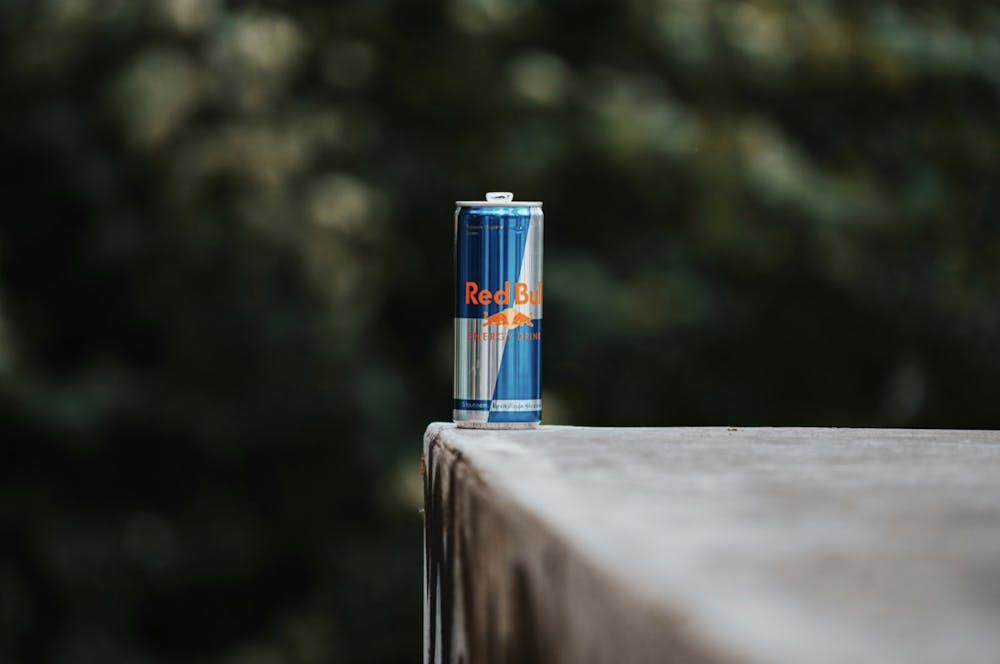And I’m not the only one.
Last week was for me, as I’m sure it was for most of you, one of the toughest weeks of the semester. Juggling a normal stressful college week along with election results had me feeling a lot of pressure; luckily, I had my favorite stress-coping strategy by my side.
For me, and for many of my fellows students, the solution is caffeine. According to one 2023 study, nearly half of college students report using an energy drink within their most recent semester. Some students keep their caffeine use casual; for some of us, it’s an addiction.
For my fellow students in an abusive relationship with our energy drinks, caffeine is the fix for everything and no amount is enough. Early morning? Grab a Red Bull. Big paper due? Try Alani Nu (rhyme intended). Students carry Celsius to their classes, Monster on tailgate weekend and Reign (the best option they sell at Huddle Mart, FYI) just to walk around campus.
Students who use energy drinks infrequently, or not at all, might wonder how we got here. While I can’t speak for every student, of course, I can share my own troubled history; I began as a young preteen, already forming a long and tumultuous relationship with energy drinks.
Like many middle school girls, my love for caffeinated carbonation began initially with the Starbucks strawberry açaí lemonade refresher. A young thirteen year old, armed with two legs and endless hours in walking distance of a Starbucks, I excitedly dipped my toes into the world of caffeine. A refresher made me feel powerful, on top of the world.
As I went through high school, however, my Starbucks habit grew unsustainable. I craved my caffeine and sugar fix more and more often, but lacked the funds to continue my newfound obsession.
The solution? For me, energy drinks. Energy drinks became more and more prevalent, with cute brands like Alani Nu blowing up online and Panera’s “Free Sip Club” giving me access to the jet fuel, heart-attack-in-a-cup that was their strawberry mint charged lemonade (RIP). Once I began working my first job, alongside my school responsibilities, I was completely lost to the world that was caffeine.
While it is true that most students don’t use energy drinks to the extent that I do (my body can withstand more than most healthy individuals’), it’s also true that many students have at least a drink every day, will have multiple when they need to pull all-nighters for school or work and use energy drinks in other sometimes inadvisable ways.
So why can’t we give up our beloved cans of artificial flavor? Energy drinks appeal to students for so many reasons: they taste sweet and fruity (for those of us who aren’t yet accustomed to the offensive flavor of coffee), they’re often low-calorie, they’re far cheaper than other readily-available beverages and they’re usually marketed as healthy and workout-boosting. Many students, and energy-drink users in general, don’t always know what they’re actually getting; brands like Celsius have even faced lawsuits for “misleading labels.”
I am the last person who would tell you not to drink energy drinks. Barring a major health incident, I don’t think I’ll ever give up my Juicy Peach Alani. However, I do encourage all my fellow students to regularly evaluate, like I have many times, their energy drink habits. If you are drinking 600 mgs of caffeine a day via three XL Panera strawberry mint charged lemonades, know that I’ve been there. From one addict to another, it might be time read some labels, do some research and maybe even lay off for a couple weeks.
Sophia Anderson is a sophomore at Notre Dame studying political science. She is a transfer student and plans to go to law school. You can contact her at sander38@nd.edu.










